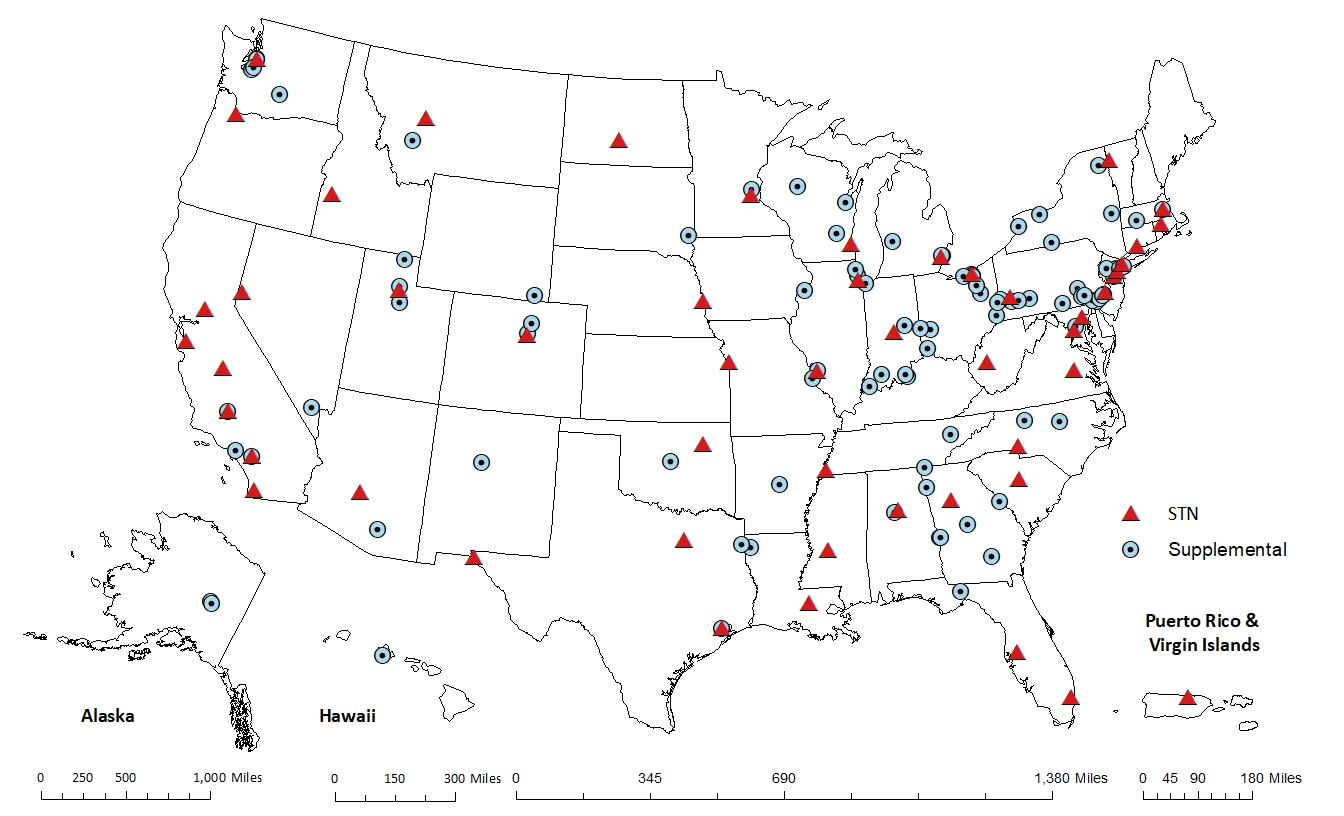Chemical Speciation Network (CSN)
As part of the PM2.5 National Ambient Air Quality Standards (NAAQS) review completed in 1997, EPA established a PM2.5 Chemical Speciation Network (CSN) consisting of Speciation Trends Network (STN) sites and supplemental speciation sites. The CSN is a component of the National PM2.5 Monitoring Network, whose goal is to establish if the NAAQS are being attained. However, CSN data are not used for attainment or nonattainment decisions, but are intended to complement the activities of the larger gravimetric PM2.5 measurement network component. CSN data are used for multiple objectives, including:
- The assessment of trends;
- The development of effective State Implementation Plans (SIPs) and determination of regulatory compliance;
- The development of emission control strategies and tracking progress of control programs;
- Aiding in the interpretation of health studies by linking effects to PM2.5 constituents;
- Characterizing annual and seasonal spatial variation of aerosols; and
- Comparison to chemical speciation data collected from the Interagency Monitoring of Protected Visual Environments (IMPROVE) network.
As of 2020, the PM2.5 CSN includes about 50 STN sites and about 100 State and Local Air Monitoring Stations (SLAMS) supplemental sites. All STN sites are required to use the national contract for shipping, handling and analysis of samples for consistency. Supplemental sites have the option of using other state, local or contract laboratories for analysis. Currently, approximately 10 of these CSN sites do not use the national contract.

